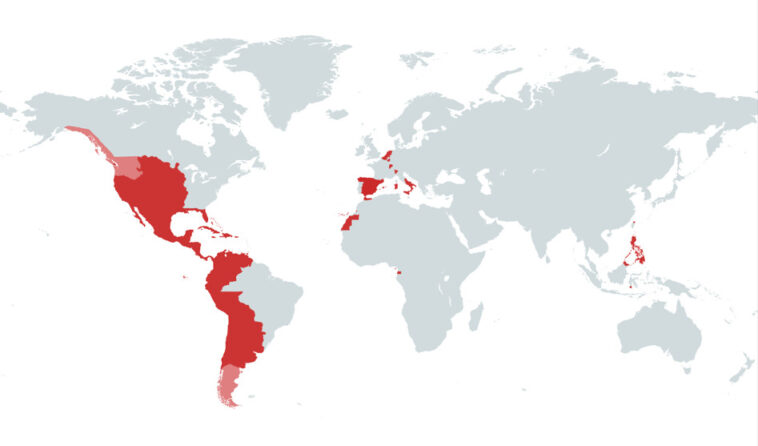Why Is Spanish So Popular?
Spanish is the second most spoken language in the world when it comes to native speakers. Over 460 million people speak it as their first language! This huge number is thanks to the Spanish Empire back in the day. From the 16th to the 19th century, Spanish explorers and colonizers spread the language across the Americas, parts of Italy, Africa, and parts of Asia, making Spanish super popular.
Top Spanish-Speaking Countries
Here are some of the main places where people speak Spanish:
- Mexico: Number one in the world, with over 120 million Spanish speakers.
- Colombia: Around 50 million people speak Spanish here.
- Argentina: About 45 million Spanish speakers.
- Spain: The original home of Spanish, with around 47 million speakers.
- United States: Even though it’s not an official language, the U.S. has around 41 million Spanish speakers.
Other places with lots of Spanish speakers include Peru, Venezuela, Chile, Ecuador, and Guatemala.
How Does Spanish Compare with Other Languages?
- Chinese (Mandarin): This is the most spoken language in the world, with over a billion native speakers, mostly because of China’s massive population.
- English: English has around 375 million native speakers, but over 1.5 billion people speak it as a second language. English is everywhere because of the British Empire’s history and the influence of the United States today.
Some Cool Numbers and Percentages
- Native Speakers: Spanish has over 460 million native speakers, which is about 6% of the world’s population.
- Global Reach: Spanish is the official language in 21 countries and is spoken by around 7.6% of the world’s population as either a first or second language.
Different Types of Spanish
Spanish isn’t the same everywhere. It changes depending on where you are. Here are many examples:
- Spanish from Spain: Spoken in Spain, with its unique pronunciation for “z” and “ce,ci”.
- Mexican Spanish: This version is big in media and pop culture, with lots of unique slang and Aztec-origin vocabulary.
- Argentinian Spanish: Known for its Italian-like intonation and using “vos” instead of “tú”.
- Colombian Spanish: Often considered one of the clearest forms of Spanish, making it popular for teaching the language.
- Peruvian Spanish: Noted for its clarity and influence from indigenous languages, especially Quechua.
- Venezuelan Spanish: Features a musical tone and many unique expressions influenced by Caribbean cultures.
- Chilean Spanish: Known for its fast pace and distinctive pronunciation, with a lot of unique local slang.
- Cuban Spanish: Rhythmic and musical, with many African influences in its vocabulary and pronunciation.
- Puerto Rican Spanish: Even though it’s a U.S. territory, Spanish is the primary language for around 3 million people, known for its unique pronunciation of the “r” sound.
Spanish in TV and Media
TV news programs usually use a clear and neutral form of Spanish. This makes them perfect for learning because they’re easy to understand. Watching news from different Spanish-speaking countries is a great way to get used to various accents and regional differences.
Want to Learn More?
Spanish connects you with millions of people and their different cultures.
El español es la segunda lengua más hablada del mundo por número de hablantes nativos, con más de 460 millones de personas. Esto se debe a la influencia histórica del Imperio Español, que difundió el idioma por América, partes de Italia, África y partes de Asia. Los principales países hispanohablantes incluyen México, con más de 120 millones de hablantes; Colombia, con aproximadamente 50 millones; Argentina, con alrededor de 45 millones; y España, la cuna del español, con unos 47 millones de hablantes. En los Estados Unidos, aunque el español no es un idioma oficial, hay alrededor de 41 millones de hablantes. Otros países importantes incluyen Perú y Venezuela, cada uno con alrededor de 32 millones de hablantes; Chile, con cerca de 19 millones; Cuba, con aproximadamente 11 millones; y Puerto Rico, donde el español es la lengua principal para unos 3 millones de personas, destacándose por su pronunciación única de la “r”. Aprender español conecta a las personas con una vasta y diversa comunidad global, abriendo puertas a nuevas culturas.




